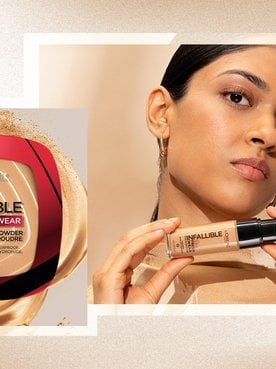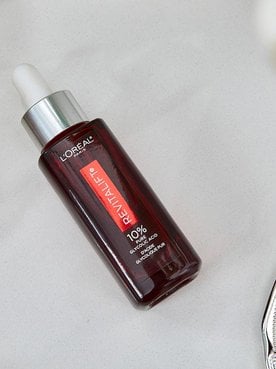Salicylic acid has long been a trusted ingredient in skincare, especially for those who deal with acne. But this beta hydroxy acid (BHA) does more than just target blemishes. Salicylic acid plays a crucial role in keeping skin clear, balanced, and smooth. Whether you're building your first skincare routine or looking to fine-tune your current lineup, understanding the benefits and uses of salicylic acid can make all the difference.
What Is Salicylic Acid?
Salicylic acid is an exfoliating acid derived from willow bark. It’s oil-soluble and can penetrate deep within the pores to clear congestion that can contribute to blackheads and whiteheads. It can also help refine skin texture and tone. Unlike physical scrubs, which can be too harsh on the skin, salicylic acid works gently but effectively to promote clarity and smoothness.
How does salicylic acid work?
Thanks to its oil-solubility, salicylic acid can penetrate the skin’s surface and travel into clogged pores, breaking apart the debris and sebum that lead to breakouts. Once inside the pore, it helps exfoliate dead skin cells from within, clearing the way for healthier-looking skin. According to the Cleveland Clinic, salicylic acid is often a gentler alternative to other chemical exfoliants, like alpha-hydroxy acids.
What Does Salicylic Acid Do for Your Skin?
Incorporating salicylic acid into your skincare routine can have several benefits. Used topically, it can help keep pores free from buildup, reducing the frequency and severity of breakouts. Products with the ingredient can also help encourage cell turnover, which, over time, can promote a clearer, more even-looking complexion. Some research even suggests that it can help regulate sebum production, making it particularly beneficial for those with oily, blemish-prone skin.
Who should use salicylic acid?
Salicylic acid use is ideal for people with oily or blemish-prone skin. It can be especially helpful during teenage years or for adults who experience hormonal or stress-related breakouts. While it works well for many, if you have very dry or sensitive skin, you may want to introduce it gradually or opt for lower concentrations to minimize irritation. We recommend applying it to a small area of your face and observing how your skin reacts before applying it to your whole face and incorporating it into your daily skincare routine. Whether you’re 16 or 36, understanding what salicylic acid does to your skin can help you decide if it’s right for you.
How Can You Add Salicylic Acid Products to Your Routine?
You don’t need to overhaul your skincare lineup to start using salicylic acid. The key is to introduce it gradually and observe how your skin responds. Start with a cleanser containing salicylic acid a few times a week, and adjust as needed. Try the L'Oréal Paris RevitaLift Radiant Smoothing Cream Cleanser, which is specially formulated to nourish skin and boost radiance while gently exfoliating and removing all traces of impurities and makeup.
Consider pairing salicylic acid with hydrating and soothing ingredients, like hyaluronic acid or ceramides, to help your skin maintain balance. A perfect match is the L'Oréal Paris RevitaLift Micro Hyaluronic Acid + Ceramides Line-Plumping Water Cream, a lightweight face moisturizer that deeply hydrates and visibly plumps all types of fine lines. Also, remember to always follow up with sunscreen during the day, as exfoliating acids like salicylic acid can increase sun sensitivity. One to try is the L'Oréal Paris RevitaLift Triple Power Moisturizer with SPF 30, which provides up to 48 hours of hydration and helps shield the skin from the sun’s damaging rays without leaving behind a white cast.
Shop the Products
Is It Okay To Use Salicylic Acid Every Day?
For many people, daily use of salicylic acid is safe and effective, especially in low concentrations. Cleansers with salicylic acid tend to be gentler since the product is rinsed off, making them suitable for regular use. Leave-on treatments like serums or spot treatments may be used daily or every other day, depending on your skin’s tolerance. Understanding how salicylic acid works and your skin sensitivity is key to knowing when and how often to use it. If you’re ever unsure about when or how often to use a particular product, consult your dermatologist—they’ll be able to give you targeted advice tailored to your skin’s unique needs.
Our Best Skin Care Products Formulated With Salicylic Acid
When choosing products with salicylic acid, look for well-rounded formulas that combine exfoliating power with nourishing ingredients. Here are a few standout options from L’Oréal Paris that feature salicylic acid alongside complementary actives.
L'Oréal Paris RevitaLift 12% Pure Vitamin C + E + Salicylic Acid Serum
This is our most potent brightening formula, pairing pure L-ascorbic acid with salicylic acid for enhanced exfoliation and clarity. This serum helps purify pores, remove excess oil, and improve skin texture, making it ideal for addressing dullness and uneven tone. After 8 weeks of consistent use, skin appears 70% brighter and 83% smoother, and pores look 59% less visible.

L'Oréal Paris RevitaLift Triple Power Moisturizer with SPF 30
A moisturizer and sunscreen in one, this cream protects and treats the skin at the same time. Alongside salicylic acid, it includes pro-retinol, hyaluronic acid, and vitamin C to target signs of aging, dullness, and uneven skin tone. The addition of SPF 30 makes it a smart choice for daily daytime use. It's a great example of how salicylic acid works within a multitasking skincare formula.
L'Oréal Paris Age Perfect Skin Care Cell Renewal Midnight Cream
This luxurious night cream renews skin texture and tone while you sleep. Salicylic acid gently refines and smooths the skin’s surface, while antioxidants support overnight repair. The rich formula makes it ideal for nighttime routines, especially for mature or fatigued skin. If you're still wondering what salicylic acid is good for, try this cream for visible overnight results.

Shop the Products
L'Oréal Paris RevitaLift Radiant Smoothing Cream Cleanser
This cream-to-foam cleanser uses salicylic acid to gently exfoliate while removing makeup, dirt, and impurities. It leaves the skin feeling refreshed but not stripped, making it a great option for both morning and evening cleansing. It also includes glycerin to keep skin soft and hydrated. It's a simple way to explore what salicylic acid does for your skin without overloading your routine.

Next Up: How To Get Clear Skin: 12 Tips for a Clearer Complexion
Photo courtesy of L’Oréal Paris







